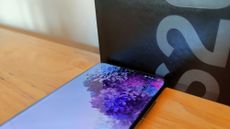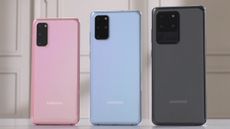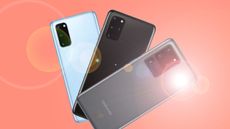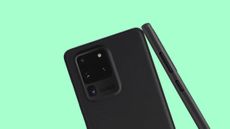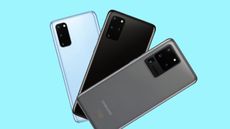Samsung revealed its upcoming flagship smartphone, the Galaxy S20 series, at Unpacked last week and while the line of handsets are available to pre-order, they won't be officially available until March 6.
Now that it's been unveiled in all of its glory, the specs of the Galaxy S20, S20+ and S20 Ultra have been confirmed and both Samsung fans and prospective customers alike were thrilled at the news that all three models would boast a 120Hz refresh rate. But it turned out that there was a catch to using it – it was only available on the lower of the two screen resolutions on offer on the Samsung S20. But never mind: Samsung is reportedly fixing this in time for the smartphone family's launch.
That's via often correct, serial Twitter leaker Ice Universe. He suggests you'll be able to enjoy the maximum refresh rate at the highest resolution. And he has pictures to prove it!
- Best Samsung Galaxy S20 deal of the day includes first 6 months HALF PRICE!
- Samsung Galaxy S20 vs Samsung Galaxy S20 Plus vs Samsung Galaxy S20 Ultra
This is one of the firmware versions of the Galaxy S20 series. We see that not only the WQHD + 120Hz mode can be selected, but also the dynamic mode, which is a very mature solution.better than limited to FHDlet's expect Samsung to implement such a solution as soon as possible. pic.twitter.com/mLtFUwH0WZFebruary 18, 2020
The shared screenshot shows an option to 'always use 120Hz' although this setting alone doesn't necessarily indicate that it'll always maintain that when the resolution is bumped up. As users in the thread below point out, people are going to want the option to take advantage of that 120Hz even if it means draining their battery faster.
We can also see a Dynamic mode that will flit between 60Hz and 120Hz on the fly to achieve 'the best balance between display quality and battery life'. At the moment, we don't know what circumstances will cause that to kick in, but according to Sammobile, it'll be triggered when particular apps launch (like camera and Google Maps), as well as when the battery temperature exceeds 42 degrees, or if the battery level drops to below 5%.
The default settings for Samsung's S20 series is QHD+ (3200x1800) at 30Hz, but as it currently stands, the 120Hz refresh rate can only be used with the FHD+ (1440x2160) resolution. If you want to tweak your display, opting for QHD+, the devices will automatically reduce the refresh rate down to 60Hz, in order to preserve the battery.
Apple's flagship iPhone 11, iPhone 11 Pro, and iPhone 11 Max all run at a locked 60Hz, and while the refresh rate isn't impressive as such, it's consistent. It's also less of a drain on the battery. The iPhone 11 also lags behind in the resolution department, with a sub-1080p display (1792x828 to be precise).
A better comparison might be Google's Pixel 4 which dipped to a sub-90Hz refresh rate when the screen brightness fell below 75%, although you can choose to force the 90Hz refresh rate in the settings.
While 90Hz and 120Hz are great for mobile gamers, making for a smoother experience overall, the phones that utilise them are usually more expensive, and will either have a larger battery, making for an unwieldy form factor, or be at risk of shorter battery life, as is the case with Pixel 4. Usually, a manufacturer will mitigate this by having the refresh rate drop if particular parameters are met, to conserve power.
The Galaxy S10 was Samsung's last flagship phone, and it's recently had a significant price drop following the reveal of the S20. Check out the differences between the Galaxy S10 and Galaxy S20 right here.
- Compare the best iPhone 11 deals
- Compare Samsung S20 deals
Source: TechRadar




